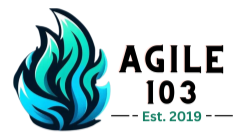Facilitated by Ade G.
In high-performing Agile teams, trust is not a “nice-to-have”, it’s the engine that drives innovation, collaboration, and resilience. Psychological safety, the shared belief that team members can take risks, speak up, and make mistakes without fear of punishment or humiliation, is the foundation.
Research by Project Aristotle at Google identified psychological safety as the single most important factor for team effectiveness. Yet, many teams still operate in environments where fear and self-preservation overshadow creativity and problem-solving.
Our August 2025 deep dive session will explore proven strategies, real-world examples, and actionable tools to help leaders and teams create a safe space that fuels performance.
Understanding Psychological Safety
Psychological safety is not about being “nice” or avoiding accountability. It’s about creating an environment where candor is encouraged, constructive debate is welcome, and mistakes become opportunities to learn.
In Agile, this matters because innovation thrives when people feel safe enough to experiment. Without it, teams tend to stick to the status quo, avoiding risk and missing breakthrough opportunities.
For a foundational overview, the Harvard Business Review offers practical insights into how leaders can foster this environment.
Practical Strategies to Build Psychological Safety
1. Model Vulnerability as a Leader
Leaders who admit mistakes and share their learning process set the tone for openness. When leaders demonstrate humility, it signals to the team that it’s safe to be imperfect.
2. Create Clear Norms for Communication
Teams should have shared agreements about how feedback is given and received. This includes listening without interruption, challenging ideas without attacking people, and making space for quieter voices to contribute.
3. Reward Experimentation, Not Just Results
Agile thrives on iteration. Recognize and celebrate thoughtful experiments, even when they fail, as part of the learning process. This helps shift the focus from perfection to progress.
4. Regularly Run Team Health Checks
Tools like the Team Canvas or Spotify’s Squad Health Check model allow teams to openly discuss how they feel about collaboration, trust, and support. These conversations can uncover hidden friction before it impacts performance.
Common Pitfalls to Avoid
-
Mistaking comfort for safety: A safe team still challenges each other’s ideas.
-
Overlooking inclusion: Psychological safety must extend to all team members, including remote and underrepresented voices.
-
Failing to address breaches: One ignored incident of disrespect can undo months of trust-building.
For more on avoiding these traps, MindTools provides step-by-step guidance for managers.
Why This Session Matters Now
In 2025, the pace of change is relentless. Agile teams are under increasing pressure to deliver innovation faster while navigating uncertainty. Psychological safety enables teams to stay adaptive, creative, and resilient, qualities that define high performance in modern organizations.
Our August session goes beyond theory, combining research-backed practices with real-life facilitation techniques you can apply immediately.
Who Should Attend:
Agile Coaches, Scrum Masters, Product Owners, People Managers, and anyone leading collaborative teams.
What You’ll Gain:
A toolkit for assessing and improving psychological safety in your team, and a repeatable process for keeping it strong over time.
High performance is not about pushing harder, it’s about enabling teams to bring their best selves to the work. Join our August deep dive to learn how to create a culture where trust and performance thrive side by side.
